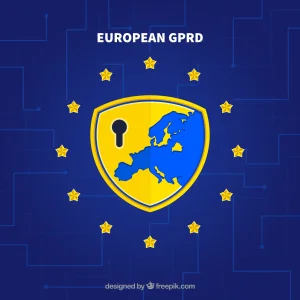The General Data Protection Regulation (GDPR) came into effect in May 2018. This is crucial legislation for businesses operating within the European Union, but also for those processing data of EU citizens. In this article, we'll explore how businesses can effectively implement the GDPR while optimizing their compliance. And complying with these guidelines isn't just a legal requirement; it's also a way to build trust with your customers and partners.

1. Understanding the GDPR
Before taking any action, it's essential to understand what the GDPR is. The regulation aims to protect the personal data of EU citizens by giving individuals more control and imposing strict restrictions on how companies can collect, store, and use that data.
2. Appoint a Data Protection Officer (DPO)
All companies that process large volumes of personal data, or that process sensitive data, must appoint a DPO. This person will be responsible for ensuring GDPR compliance within the company and will serve as the main point of contact for supervisory authorities.
3. Carry out an audit of your data
Identify what data you collect, where it comes from, and how it is stored, used, and shared. This audit will help you identify potential gaps in your compliance and develop an action plan.
4. Inform and train your teams
Education is key. Make sure everyone on your team understands GDPR requirements. Hold regular training sessions to maintain ongoing awareness of data protection issues.
5. Update your privacy policies
They should be clear, concise, and easy to understand. Inform your customers and users about how you use their data, their rights under the GDPR, and how they can exercise these rights.
6. Implement robust security measures
Protect data from unauthorized access, loss, and leaks. Use technologies like encryption, implement regular backup procedures, and regularly test your security.
7. Prepare for data access requests
Individuals have the right to request a copy of their personal data. Ensure you have a process in place to respond to these requests within the required 30-day timeframe.
8. Evaluate and adapt regularly
GDPR compliance isn't a one-time task. It's essential to regularly evaluate and adjust your practices to ensure you're still meeting requirements as they evolve.
9. Collaborate with your suppliers
Make sure your suppliers and partners are also GDPR compliant. Your company can be held liable if they fail to comply.
10. Prepare for data breaches
Even with the best precautions, breaches can occur. Have a plan in place to respond quickly, notifying affected parties and regulators as appropriate.
Conclusion
GDPR compliance isn't just an obligation—it's an opportunity. Companies that adhere to the highest data protection standards inspire trust and loyalty among their customers. By following these steps and engaging in proactive compliance, your business can not only avoid penalties but also strengthen its reputation and customer relationships.
The GDPR is a major step toward a more respectful and transparent approach to processing personal data. Enforcing it is a challenge, but it's also an opportunity for businesses to demonstrate that they take privacy seriously. This guide is a first step toward compliance, but every business is unique. A tailored approach, guided by GDPR principles, is the key to success.
